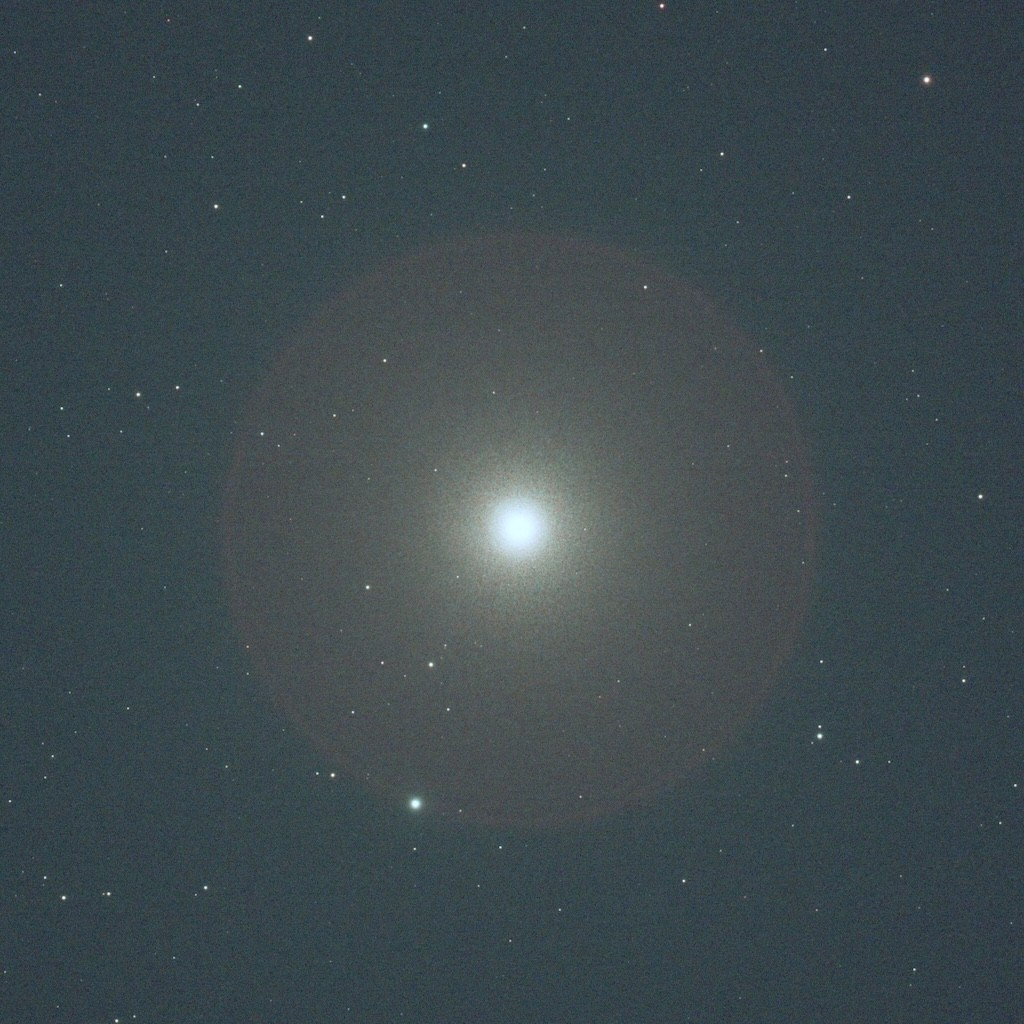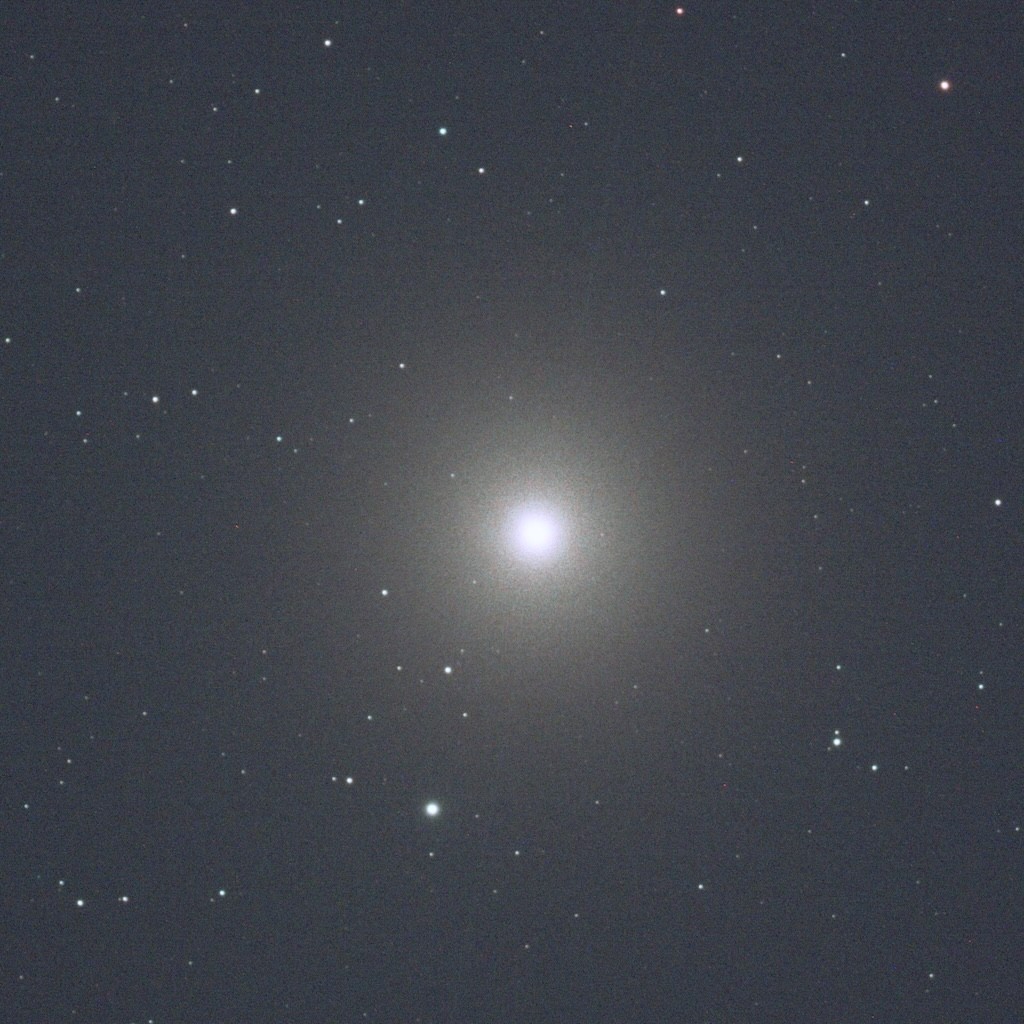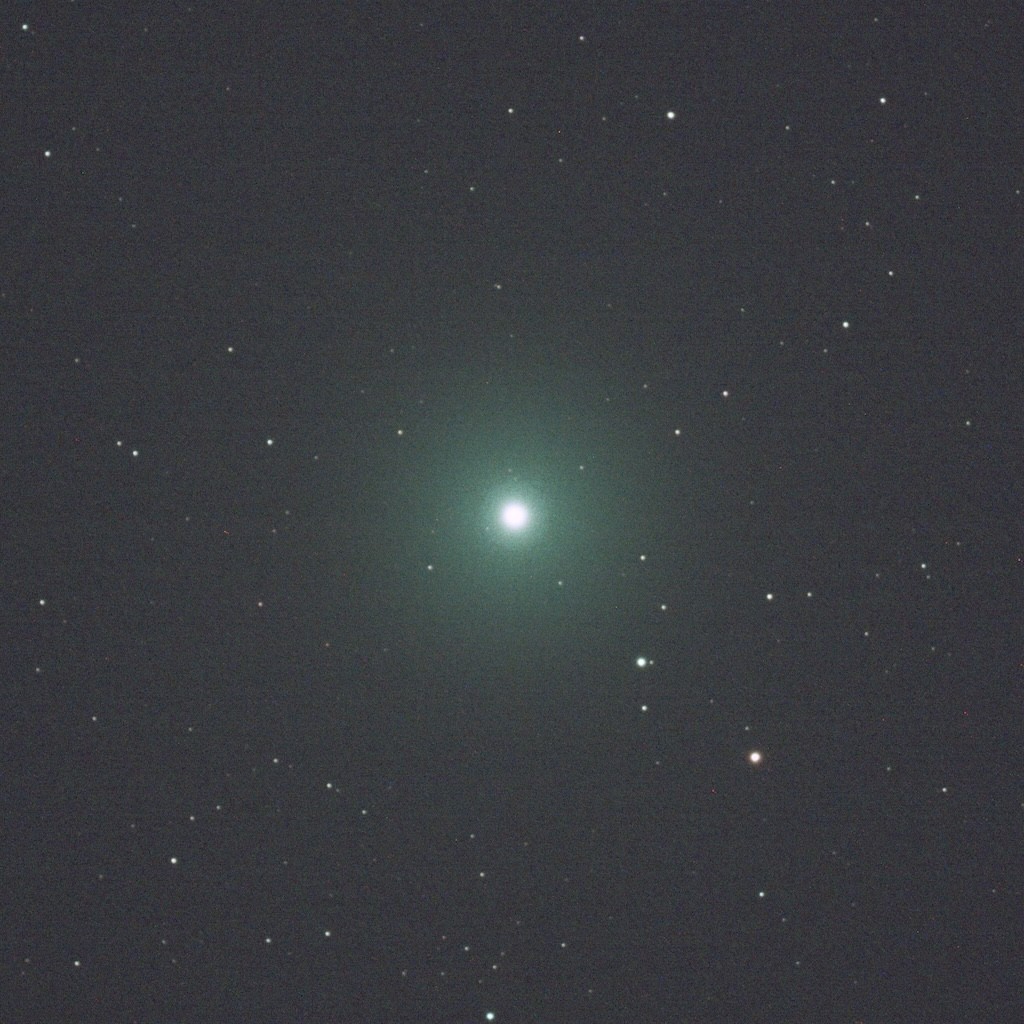Back to the FSQ -- remember the little glitch in the retaining ring of the IDAS NBZ-II causing two large spikes? I substituted a retaining ring from a different filter, and the spikes are now gone.
Prefilter to reduce halo? Bunk!
An Optolong UV/IR cut filter placed between the FSQ flattener and the NBZ made the halo problem way worse! :-)
This is a stack 10 frames of Arcturus (Mag +0.15) at 2 minutes per frame, and gain 0 on an ASI2600MC. The image is first cropped to 2048x2048, and scaled down by 2 to a 1024x1024 JPEG:

You can see a weak halo around the star, but a huge halo, about half the size of the cropped frame! So, confirmed that a prefilter does not reduce halo, but adds a gigantic (and strong) halo.
This is with the Optolong removed, leaving just the IDAS NBZ-II:

Again, you can see a weak halo (slightly magenta -- so probably coming from the OIII bandpass, and not the H-alpha bandpass, which would have been red). But no more gigantic halo.
This is what Alioth (Mag about +2) looks like, so about 10 dB less brightness:

The halo is definitely there (I saw it in the original NBZ too).
Here is something interesting, but should not be a surprise. When I removed the Optolong, I did not have to refocus the FSQ -- because focus determines the distance from the Petzval to the flattener, and I did not change anything there. I simply reduced the backfocus adjuster to compensate for removal of 1.85mm of glass, and was back in business without having to refocus the EAF :-). Everything done by the books.
Anyhow, it is good to know that the spike was from the retaining ring, and not from the backfocus adjuster, at least for APS-C sized cameras. This means I can just leave the backfocus adjuster on the FSQ, instead of getting an equivalent spacer fabricated by PreciseParts.com. This way, when I change filters, I don't have to fumble with shimming washers -- simply pop in a filter into the filter drawer, and dial in the 1/3-glass thickness amount into the backfocus adjuster.
OK, done with the prefilter experiment. And the FSQ is back to normal without the weird spikes -- but now with a permanent backfocus adjuster.
I might try for NGC7000 to see if Xi Cygni has a halo -- some narrowband filters often shows a halo on that star when exposing to get enought light from the North America nebula. The nebula should come over the trees in an hour or two.
Chen